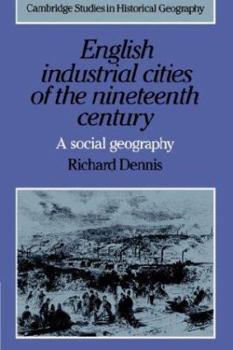English Industrial Cities of the Nineteenth Century: A Social Geography
(Part of the Cambridge Studies in Historical Geography Series)
To contemporaries the nineteenth century was 'the age of great cities'. As early as 1851 over half the population of England and Wales could be classified as 'urban'. In the first full-length treatment of nineteenth-century urbanism from a geographical perspective, Richard Dennia focuses on the industrial towns and cities of Lancashire, Yorkshire, the Midlands and South Wales, that epitomised the spirit of the new age. In recent years urban historians and geographers have produced a wide range of detailed studies, both of particular cities and of specific aspects of nineteenth-century urban society, including the housing system, local government, public transport, class structure, residential segregation and social and geographical mobility. Dr Dennis offers a critical review of this research, integrated with his own original study of mobility, social interaction and community in the West Yorkshire town of Huddersfield.
Format:Paperback
Language:English
ISBN:0521338395
ISBN13:9780521338394
Release Date:September 1986
Publisher:Cambridge University Press
Length:384 Pages
Weight:1.30 lbs.
Dimensions:1.0" x 6.1" x 9.2"
Customer Reviews
1 rating
what was it like being an early industrial city ?
Published by Thriftbooks.com User , 16 years ago
So what was it like in the early years of the Industrial Revolution? Dennis looks not at London, which has already been exhaustively studied for this period, but at other British cities. Especially Liverpool and Manchester. The cities are analysed according to how their urban structure developed. Like the types of affordable housing for newly urbanised masses migrating from the countryside. Then there were issues of how the workers got to and from their workplaces. Giving rise in part to the proliferation of public transport. Remember too that during those years, there were few templates for city planners, to the extent that they existed, to draw on. Hence we see comments by contemporaries about the chaotic nature of some cities. But the book looks deeper, and describes a dynamic logic to the layouts.






